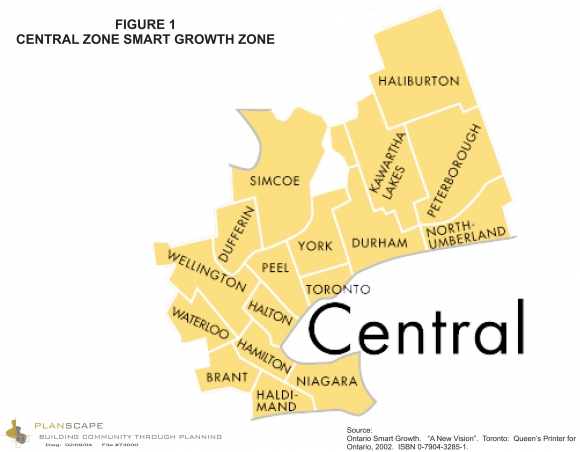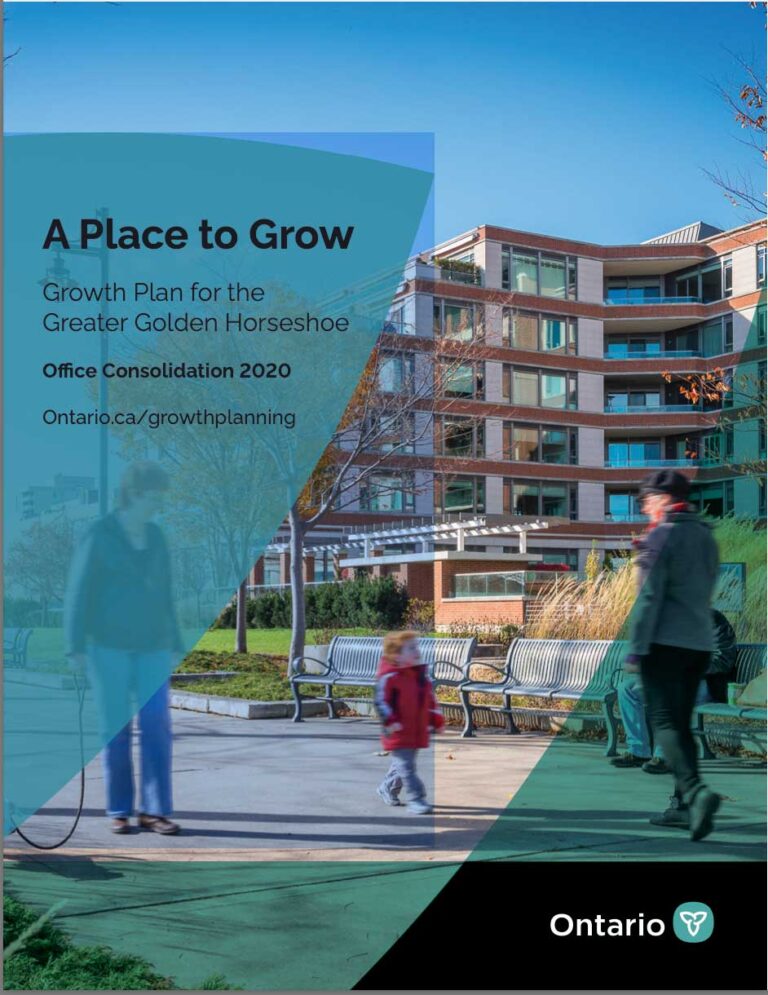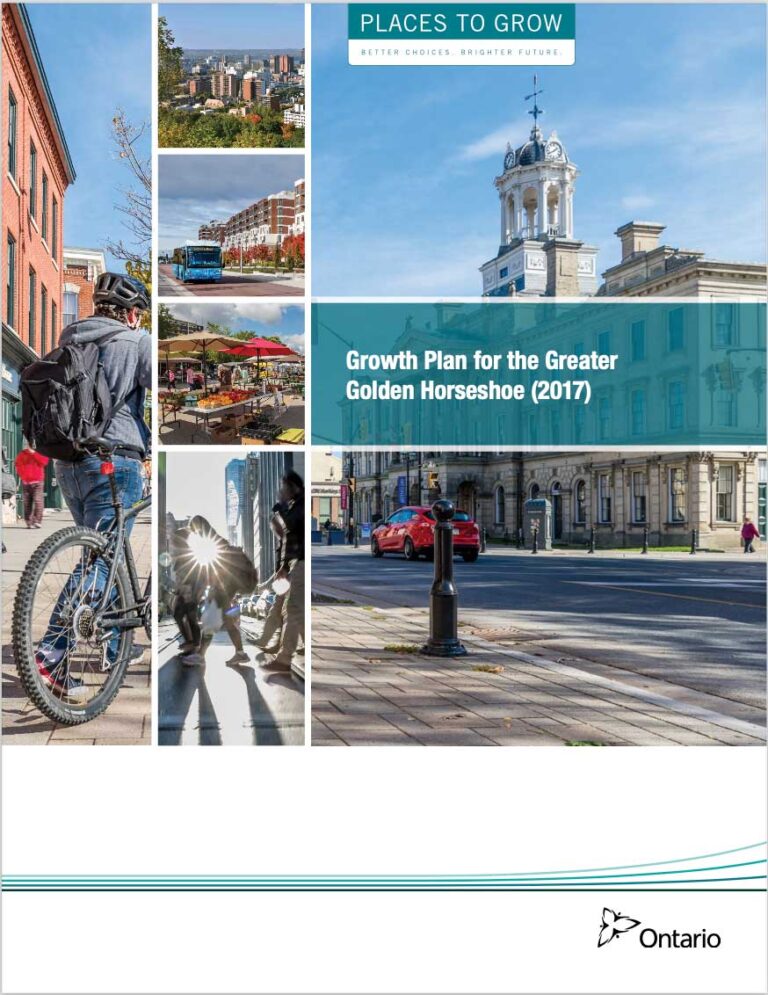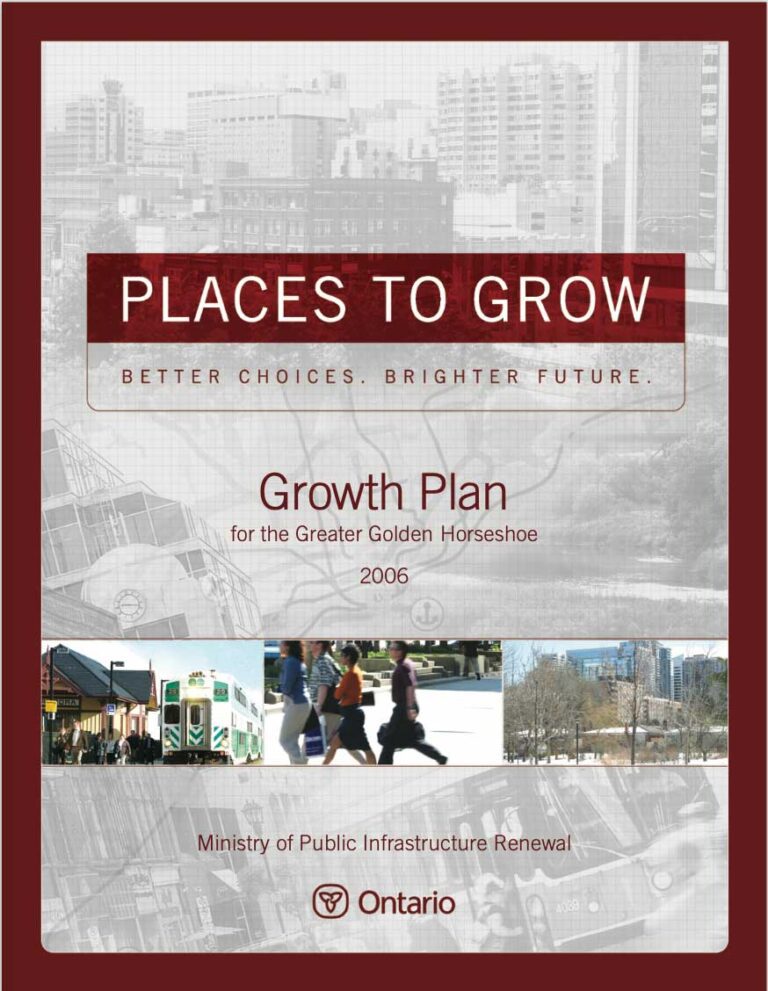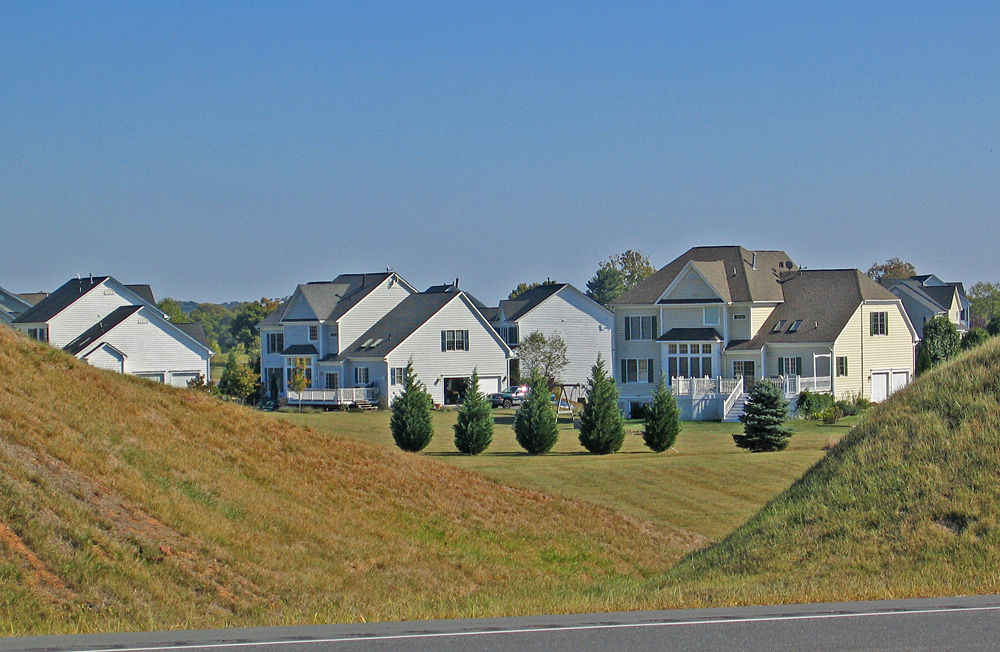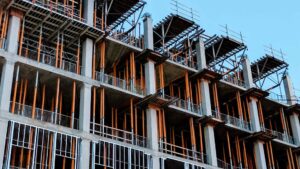The Ford government is rolling back progress on building healthier communities.
How Did We Get Here?
The transition from 1950s sprawl development to smart growth policies as a provincial concern was really solidified by Premier Mike Harris.
Yes, that Mike Harris.
Despite his first term, which gave municipalities more freedom to grow as they wish, by the second term key grassroots movements to protect the Oak Ridges Moraine demonstrated to the public how sprawling growth patterns were hurting our water, our land and our health.
In response, the Harris government decided to get sprawling growth patterns under control and set up a series of Smart Growth Panels across Ontario.
That was in 2002.
The Central Zone panel, which included Simcoe County region, concluded early on in its mandate that the status quo sprawl and growth at all costs mentality would lead to dire consequences for the region by 2035 including: commuting trips that would take 45 percent longer, mostly due to congestion; a marked deterioration in air quality; worsening delays in the movement of goods; and higher taxes.
Complete Communities Connected by Public Transit
The panel sketched out a concept of how growth in this area should go to avoid those outcomes – its vision relied heavily on compact, complete communities connected by public transit: TTC rail, GO rail, bus rapid transit, and inter-city and inter-regional rapid transit. There were also delineated areas for protected natural zones and an awareness of agricultural lands that were under increasing pressure from growth.
When the Liberals came into power in 2003, they used a lot of the concepts from the Smart Growth Panels to form Ontario’s first Growth Plan. The award-winning Growth Plan directed growth to form complete communities and stop sprawl.
Unfortunately, these efforts were short lived.
A series of amendments and regulations watered down the objectives over the years, but at its core it still aspired to keep sprawl in check through limiting growth in rural areas, ensuring large developments were on municipal services, promotion of public transit, climate change considerations and rigorous criteria in order to expand settlement areas.
So why the history lesson on planning?
Well it’s important to note that governments, over previous decades, have been trying to avoid the situation the province is now promoting, which is sprawling subdivisions, and with a very little strategy to deal with climate impacts, water impacts, and loss of farmland and biodiversity that come with it.
What is Happening Now?
It’s not hyperbole to say that the changes made recently by the province with respect to growth and planning take us back to the 1990s. Some of the problematic changes include:
- Density targets for our region have been scaled back tremendously.
This calculation outlines how efficiently we use land to house people and places of employment.
- The limits that were put on growth, previously known as population allocations, are now set as a minimum target, not as a maximum as they were before.
- Formerly, settlement areas could only be expanded during the Official Plan (OP) process, so long as evidence is presented to demonstrate need. Now they can be expanded up to 40 hectares outside of the OP period.
- New developments no longer need to prioritize being serviced by municipal water or wastewater – septics and communal septics are now allowed more easily.
This enables development to get into more natural, rural areas, and puts water quality at risk.
- Calculations to determine how much land must be set aside for new growth outside of built upon land have changed too.
The municipality must now plan for growth to 2051. This means that in the middle of a pandemic with no knowledge of how work/commute/travel patterns will change, municipalities must decide by June, 2022, how much new land to give up to development.
It also means that due to COVID restrictions this Municipal Comprehensive (MCR) process, that requires public consultations, is limited to online interactions. That’s why many communities are asking their local government to delay these decisions until people can properly consult with staff and neighbours.
- Municipalities are now forced to calculate how much land based on market needs.
Simply put, there are two ways to calculate this – looking to see what you will need in the future based on changing demographics, what you already have planned, and anticipated need (e.g. more rentals/apartments/seniors residences etc.)…
OR
…you can look back to what has historically been provided by the market (e.g. detached homes, McMansions) and then just extrapolate that forward.
The current government chose the second option.
This means that in places like Simcoe County where large homes dominate housing stock, we can expect more of that despite more people requiring smaller units and apartments (seniors downsizing, youth, low income).
This also means that more of our green spaces and farmland will be sacrificed to provide for McMansions and sprawl, while people who need housing types that are more affordable (laneway homes, stacked townhomes, apartments) will be mostly ignored.
Why Is It A Concern?
In all of this we need to understand one simple truth – how we grow and where we grow has a massive impact on climate change, water health, biodiversity and our health consequently.
Growth patterns lock in centuries of impacts and GHG emissions. We can no longer treat land use as its own issue, nor can we always assume that growth is always a net benefit to our communities.
This is simply not true. We can grow our communities in ways that provide affordable housing, protect our natural spaces and water and aspire to create healthy, vibrant centres where people can live and work.
Or, we can grow our communities in ways that use 1950s thinking to deal with 21st century challenges – which will lead to more sprawl, more highways and less public oversight.
One path chooses the needs of the people and our natural communities, the other helps line the pockets of speculative developers at the community’s expense.
Unfortunately, the province’s policies are 60 years behind the evidence and science, and our communities, now and in the future, will be worse for it.
How Can You Get Involved?
- Push back against mega-projects, such as the Bradford ByPass, The Orbit, and the Upper York Sewage Solution.
- Share your concerns on social media.
- Sign up to our newsletter to stay informed on developments with growing the Greenbelt and limiting sprawl.
Links to Further Reading
Related Content


